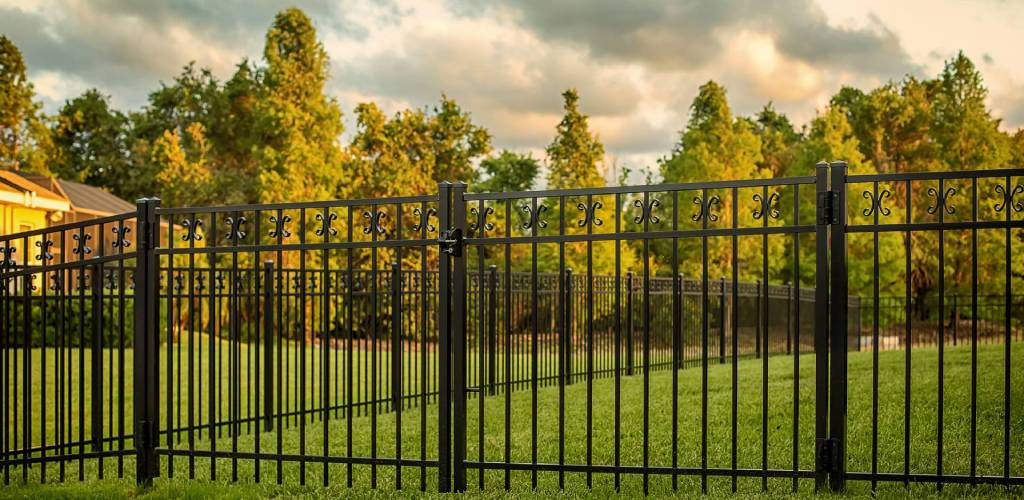All Categories
Featured

Amongst the most prominent alternatives, timber, plastic, and aluminum each deal distinct benefits and disadvantages. Right here's a break down of the pros and cons of these three usual fence products.
Wood Fencing. Timber fence has been an ageless option for homeowners as a result of its natural elegance and versatility.
Pros:. Aesthetic Allure: Timber supplies a classic and warm look that matches a range of architectural designs. Customizable: It can be repainted, stained, or reduce into special designs to fit individual choices. Affordable: At first, timber fencing can be a budget-friendly choice contrasted to various other materials. Eco-Friendly: Wood is a renewable energy and can be sustainably sourced. Cons:. High Upkeep: Timber needs regular securing, staining, or painting to stop rot, insect damages, and weathering. Toughness Issues: Without appropriate care, wood can warp, crack, or degeneration gradually, specifically in locations with high humidity. Shorter Life expectancy: A timber fencing typically lasts 10-20 years, depending on the sort of wood and level of maintenance. Wood is excellent for those that value a standard appearance and are eager to commit to its maintenance.
Vinyl Fencing. Plastic is a contemporary, low-maintenance fence choice that has grown in appeal over the last few years.

Pros:. Reduced Upkeep: Vinyl does not require painting, staining, or sealing and can be conveniently cleaned with soap and water. Weather Resistant: It stands up to rough climate condition without decaying, rusting, or warping. Long-Lasting: Vinyl fences can last 20-30 years with marginal maintenance. Variety of Styles: Offered in numerous shades, designs, and appearances, some vinyl options mimic the look of timber. Disadvantages:. Greater Upfront Price: Vinyl fencing can be more costly at first compared to wood. Brittleness in Winter: In severe cold, vinyl might split or come to be brittle. Limited Repair works: Private panels can be hard to replace, calling for cautious matching to the existing fencing. Plastic is finest matched for homeowners seeking a long lasting, low-maintenance service with modern-day visual appeals.
Aluminum Fence. Light weight aluminum fencing is a lightweight and durable alternative, commonly chosen for its modern-day appearance and flexibility.
Pros:. Rust-Resistant: Light weight aluminum doesn't rust, making it an exceptional selection for damp or damp climates. Reduced Maintenance: Calls for marginal upkeep and is very easy to clean. Durable: While light-weight, aluminum is solid enough to withstand several ecological problems. Long Life expectancy: Can last several years without significant wear or wear and tear. Range of Styles: Uses a elegant and sleek look, frequently utilized for ornamental or ornamental functions. Disadvantages:. Greater Cost: The first financial investment for aluminum fencing is greater than timber or plastic. Much Less Personal privacy: Light weight aluminum fencings are frequently created with open pickets, making them much less efficient for privacy. At risk to Dents: Although resilient, aluminum can be nicked by strong effects. Aluminum is perfect for those seeking a fashionable, durable alternative that requires minimal care.
Making the Right Selection. Each secure fencing material-- plastic, timber, and aluminum-- uses distinctive benefits and downsides. Your choice must depend upon your certain priorities, such as spending plan, upkeep choices, environment, and aesthetic objectives:
If you like a conventional look and do not mind regular upkeep,Choose timber. Select plastic if you desire a low-maintenance, weather-resistant fencing with contemporary appeal. Go with aluminum if you prioritize toughness, corrosion resistance, and a smooth layout. By evaluating these cons and pros, you can choose a fence material that boosts your residential or commercial property while satisfying your functional requirements.
Latest Posts
Practical Carpet Look After Lasting Elegance
Published Apr 21, 25
1 min read
Style Your Perfect Shower Room
Published Apr 21, 25
1 min read
Customized Wealth Monitoring with WyHy Federal Cooperative Credit Union
Published Apr 21, 25
1 min read